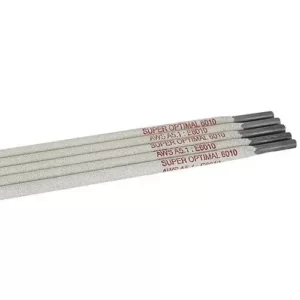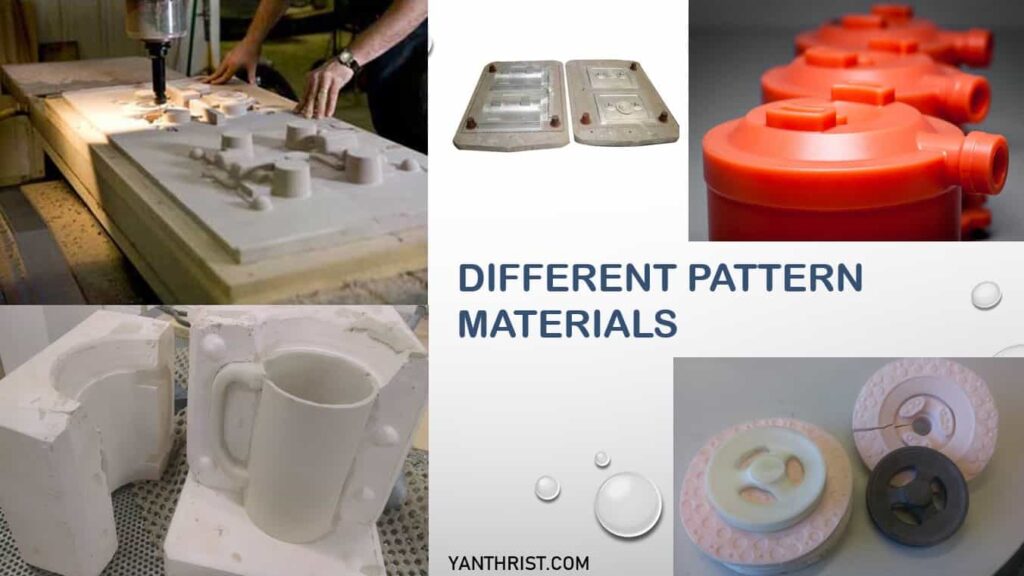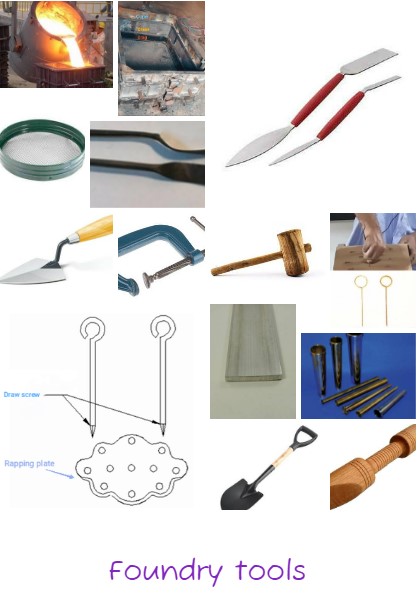An Welding Electrode with different flux covering gives different properties to weld metal. Those condition and properties can be indicated by coding of electrodes. They are mainly categorized in 3 system as following,
1. I.S (Indian standard) coding.
2. A.W.S ( American Welding Society) coding.
3. B.S ( British Standard) coding.
1. IS coding of electrodes (IS 814-1991)
It consists of the following letters and numbers shall be followed in the order stated below:-
A. A prefix letter “E” indicates a covered electrode for MMAW manufactured by extrusion process.
B. First letter indicating the type of covering
| Letter | Meaning |
| A | Acidic |
| B | Basic |
| C | Cellulosic |
| R | Rutile |
| R.R | Rutile Heavy coated |
| S | Any other type |
C. First digit indicates covered electrode for tensile strength in combination with the yield stress of the weld metal disposal.
| Digit | Tensile strength | Yield strength |
| 4 | 410—510 N/mm2 | 330 N/mm2 |
| 5 | 510—610 N/mm2 | 360 N/mm2 |
D. 2nd digit indicates minimum percentage elongation in tensile test in combination with minimum impact strength of deposited weld metal.
| First Digit | Min % of elongation at gauge length of 5.65 √s | Min impact strength at Joule at°C |
| 0 | Not required | Not required |
| 1 | 20 | 47 J at (+27°C) |
| 2 | 22 | 47 J at (+0°C) |
| 3 | 24 | 47 J at (-20°C) |
| 4 | 24 | 27 J at (-30°C) |
| Second Digit | Min % of elongation at gauge length of 5.65 √s | Min impact strength at Joule at°C |
| 0 | Not required | Not required |
| 1 | 18 | 47 J at (+27°C) |
| 2 | 18 | 47 J at (+0°C) |
| 3 | 20 | 47 J at (-20°C) |
| 4 | 20 | 27 J at (-30°C) |
| 5 | 20 | 27 J at (-40°C) |
| 6 | 20 | 27 J at (-46°C) |
f. 3rd digit indicates the welding position.
| Third Digit | Welding position example | Symbols |
| 1 | All positions | F, H, V, D, O |
| 2 | All positions except vertical down | F, H, V, O |
| 3 | Horizontal fillet, Flat butt, Flat fillet. | F, HF |
| 4 | Flat butt and fillet weld. | F |
| 5 | vertical down, Flat butt and fillet weld, Horizontal and vertical fillet welds. | D, F, HF |
| 6 | Any other than above |
g. 4th digit indicates the current condition of electrode used.
| Fourth digit | Polarity of DC current | Open circuit voltage if AC used |
| 0 | (+ve) | — |
| 1 | (+ve) & (-ve) | 50 |
| 2 | (-ve) | 50 |
| 3 | (+ve) | 50 |
| 4 | (+ve) & (-ve) | 70 |
| 5 | (-ve) | 70 |
| 6 | (+ve) | 70 |
| 7 | (+ve) & (-ve) | 90 |
| 8 | (-ve) | 90 |
| 9 | (+ve) | 90 |
Additional coding:-
(i). A letter H1, H2, H3 Shall be included in case of low Hydrogen electrode (Basic) which gives diffusible hydrogen per 100 gm weld metal.
H1= upto 15 ml diffusible hydrogen.
H2= upto 10 ml diffusible hydrogen.
H3= upto 5 ml diffusible hydrogen.
(ii). The letter J, K, L indicates metal recovery as effective electrode efficiency.
| Letter | Metal recovery |
| J | 110-129% |
| K | 130-149% |
| L | 150% & more. |
(iii). The letter “X” indicates radiographic quality of electrode.
“ER 4213H1 JX“
IS Coding of Electrode
- E indicate covered electrode suitable for SMAW i.e. manual metal arc welding,
- R type of flux covering,
- 4 indicate tensile strength of weld metal is 410- 510 N/mm2 with minimum yield strength of 330 N/mm2,
- 2— the minimum percentage elongation in tensile test of deposited weld metal should be 22% in a gauge length of 5.65 √s and the minimum impact strength of deposited weld metal is 47 J at 0°C,
- 1 — the electrode is suitable for use in all welding positions viz., F, V, D, O,
- 3 — welding current conditions are D+, A 50i.e. with direct current positive polarity used and if employed for use with ac the minimum OCV should be 50 volts,
- H1 —it is hydrogen controlled electrode with diffusible hydrogen up to 15 ml/100 g of deposited weld metal,
- J indicate overing contains iron powder to give a metal recovery rate of 110—129%,
- X — the deposited weld metal will be of radiographic quality.
2. AWS CODING OF OF ELECTRODES
The A.W.S coding of electrodes is as follow,
- The letter “E” stands for cover MMAW electrode stick.
- The first two digits indicate minimum tensile strength of weld metal in PSI that electrode can produce.
- The third digit indicate welding position.
- Last digit indicate kind of flux coating used.
| Digit | Flux covering |
| 0,1 | Cellulose |
| 2,3,4 | Rutile |
| 5,6,7 | Basic |

“AWS A5.1: E6010”
AWS Coding of Electrode
- E Stands for Electrode.
- “60” Minimum tensile strength 60 Ksi.
- “1” indicate that it is suitable for All positions.
- “0” indicate Cellulose flux.
3. B.S CODING OF ELECTRODES
B.S coding for carbon steel and alloy steel is following,
- The letter “E” stands for cover MMAW electrode.
- The first two digits indicate tensile and yield strength of Weld.
- The next two digits indicate impact strength or toughness.
- The letter after four digits indicate type of flux coating.
- The first three digits after letter indicate electrode efficiency.
- The fourth digit after letter indicates Welding position.
- The fifth digit after letter indicates current and voltage condition.
- The last letter of coding is additional indicates specified Properties of Electrode.
“E5133R 16020H”
BS 639 cover Electrode
- E Stands for Electrode.
- Minimum tensile strength 510 MPa.
- “33” indicate toughness.
- “R” for Rutile flux covering.
- 160 electrode efficiency.
- “2” indicate suitable for all positions except vertical down.
- “0” indicate electrode characteristics.
- “H” for hydrogen content.
Along with above BS EN 499 covered electrode system explained below with a example,
“E503 2Ni B72H10”
BS EN 499 MMAW cover electrode
- E Stands for Electrode.
- “50” indicate yield strength in N/mm2
- “3” indicate toughness.
- 2Ni indicate chemical composition.
- B for flux covering Basic.(“O” for oxidising)
- 7 for metal recovery and current type.
- 2 indicate welding position.
- H10 indicate Hydrogen content.
FAQ
1. How to select Electrode for Welding?
The selection of an electrode is not easy. It’s Important consideration when using M.M.A.W welding to select proper electrode for specific application. The following factors have to be keep in mind,
- Properties of base metal,
- Joints design,
- Welding current and position,
- Welding speed and Cost,
- Strength property of final product,
- Production efficiency and skill of welder.
2. State the Effect OF Moisture on Electrode?
- Small moisture particles in air mixed up with oxygen, hydrogen etc. can highly effect electrode sticks which are keep in open environment. As a result following conditions happen,
- During welding it creates excessive spatter and fumes.
- Core wire of electrode becomes rusty and flux covering becomes fragile.
- It causes many internal welding defect.
- It decreases the strength of Weld.
Why Baking of Electrode Sticks is necessary before application?
Flux coating of electrodes are made of such material that helps to absorb moisture if kept in open environment. It decreases the quality of weld. To get best weld in final product it’s important to store the electrode in absolute dry conditions. Also before using it’s good if Electrode is heated once. High baking temperature helps to keep the residual moisture low and sometimes temperature as High as 400°C required.


